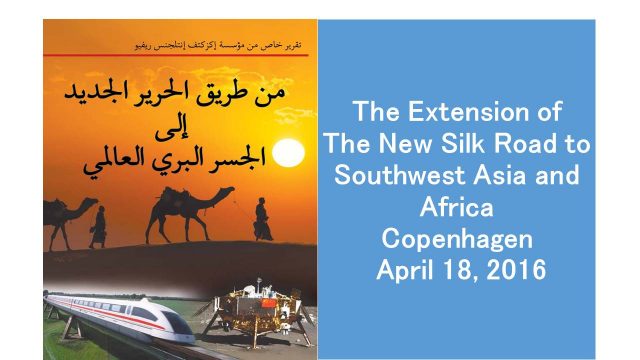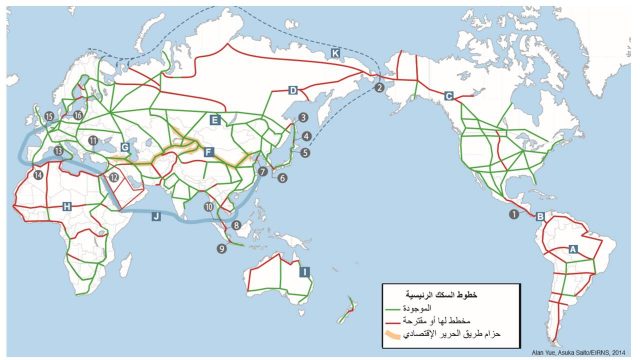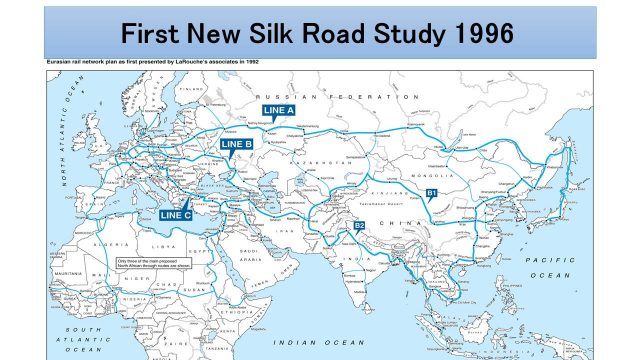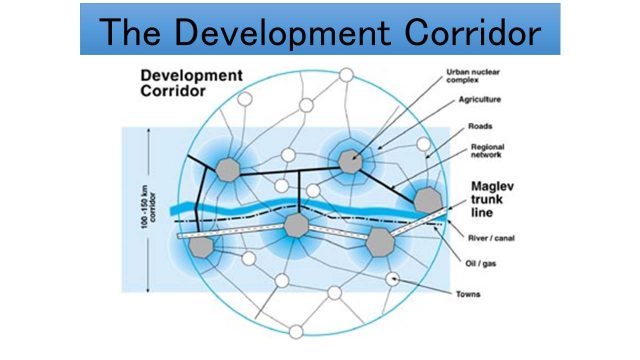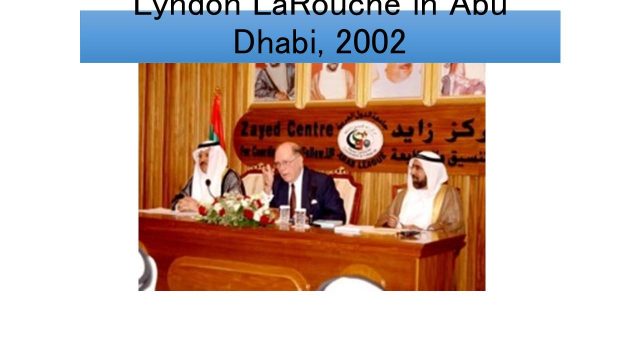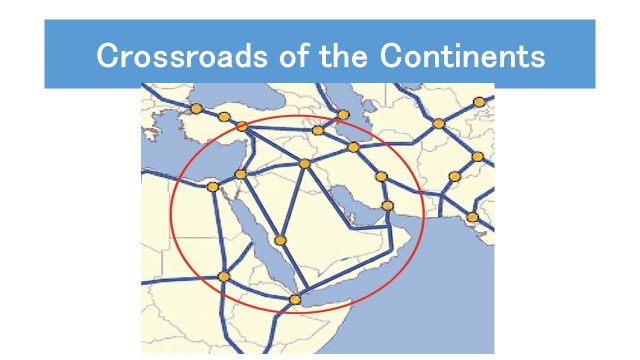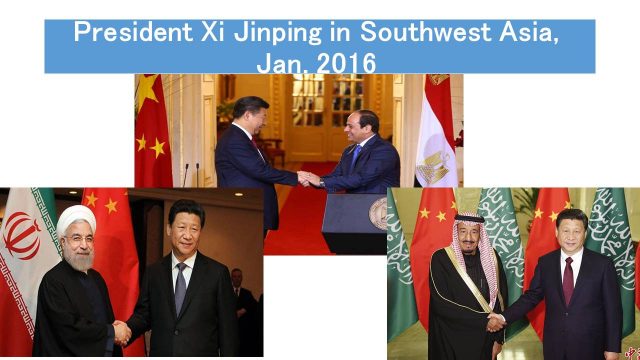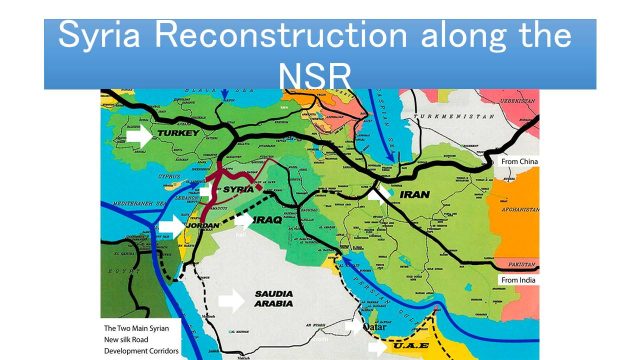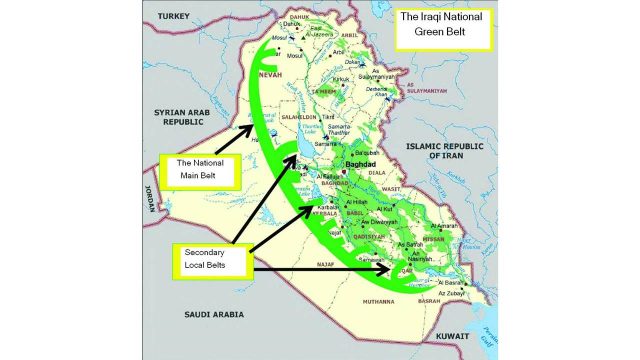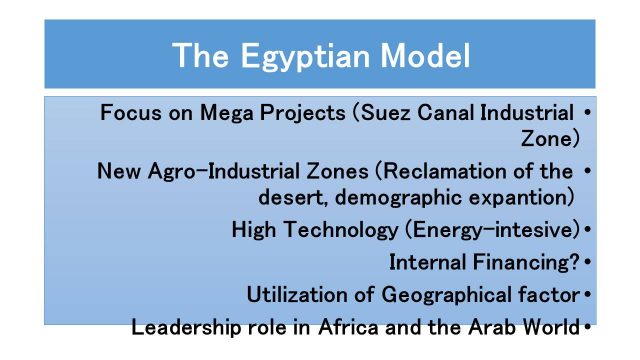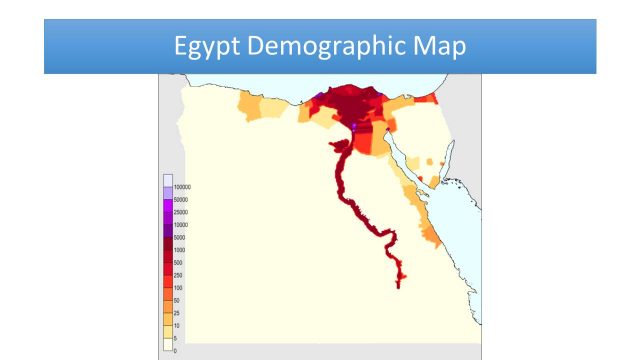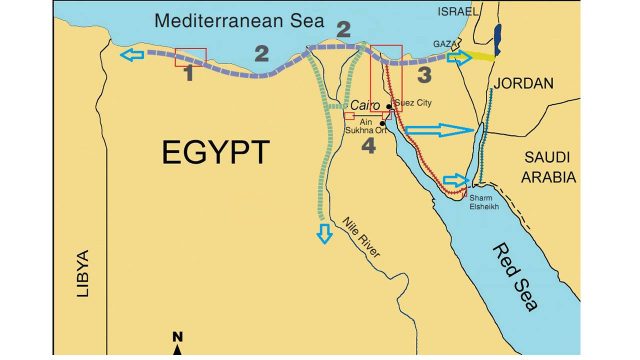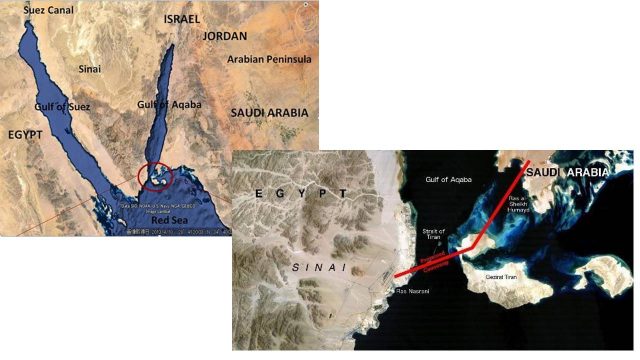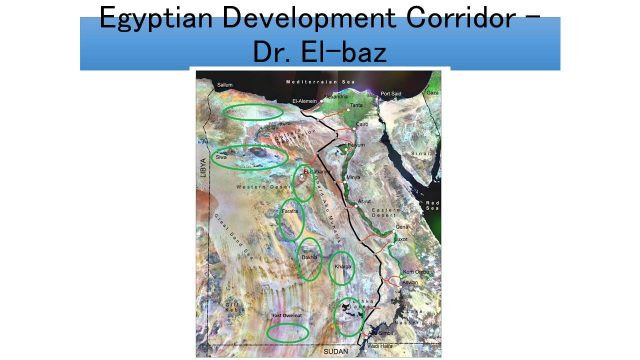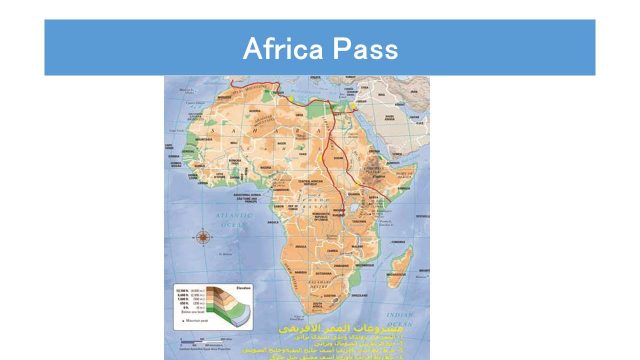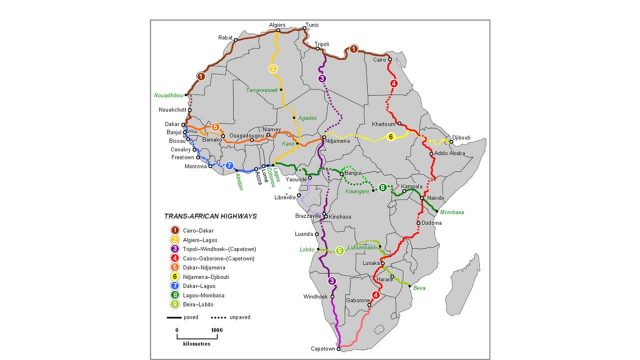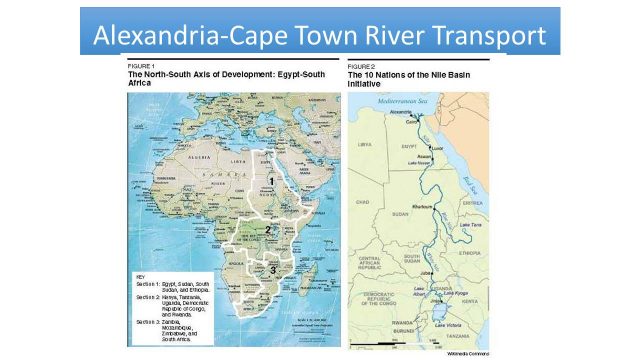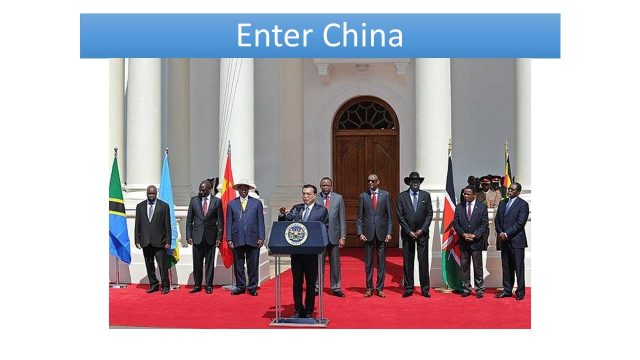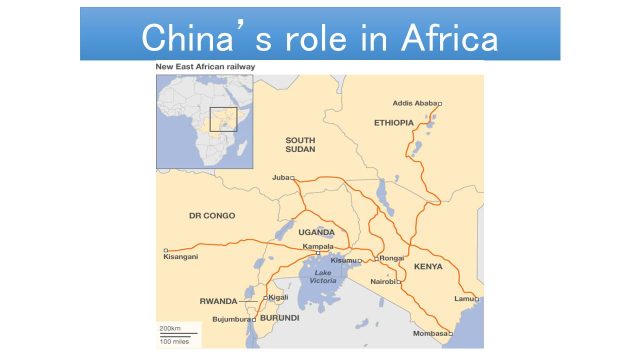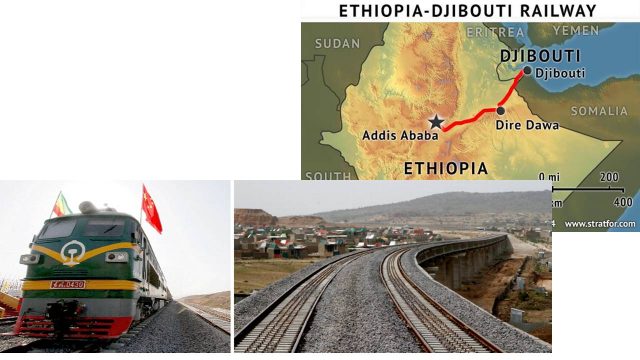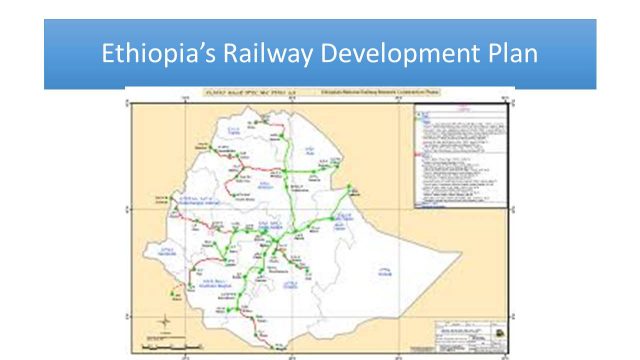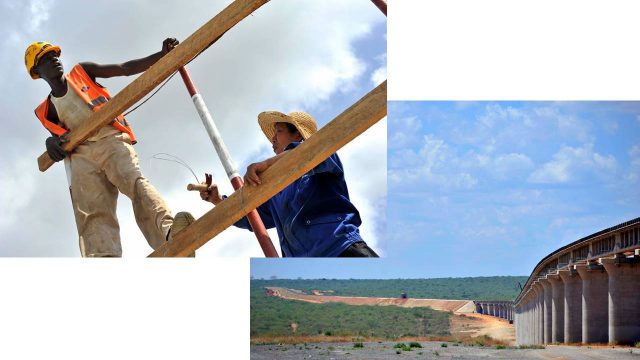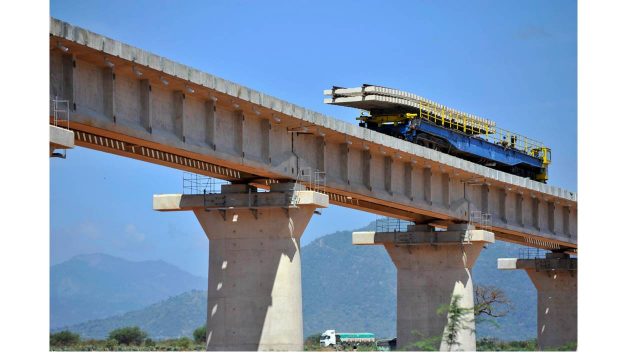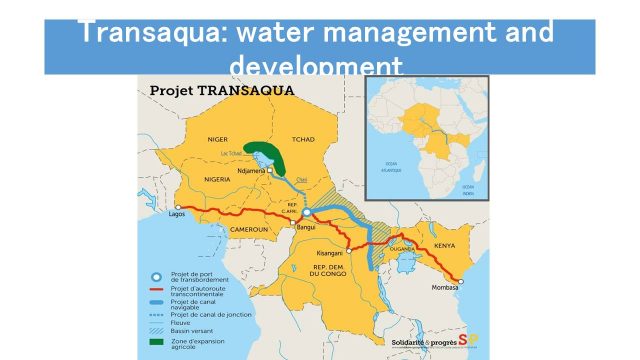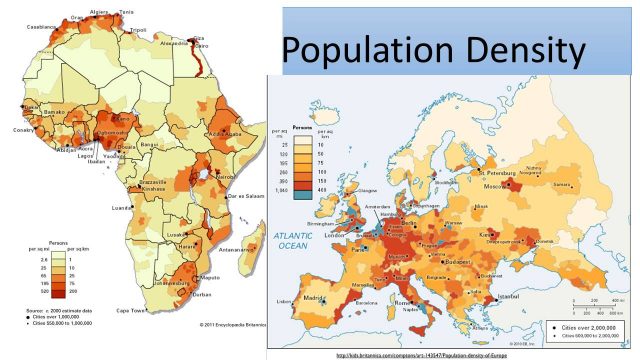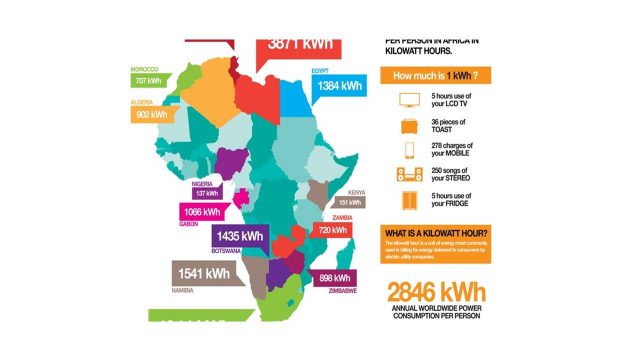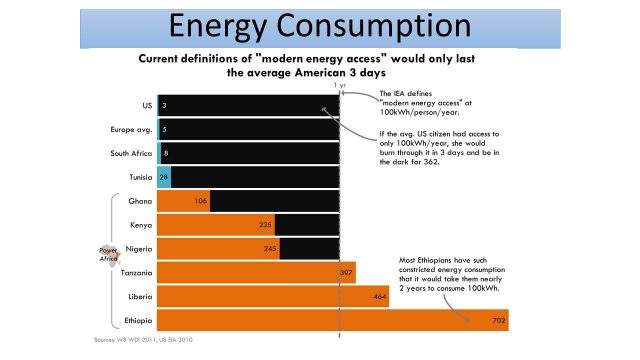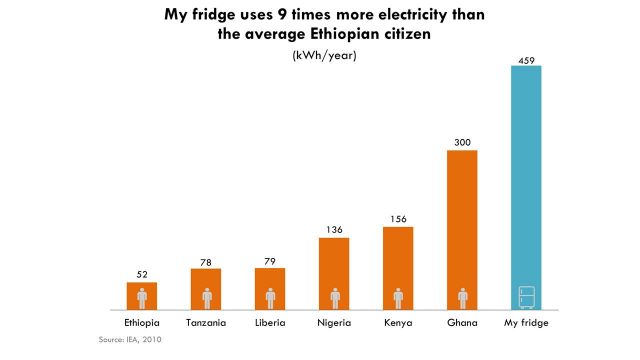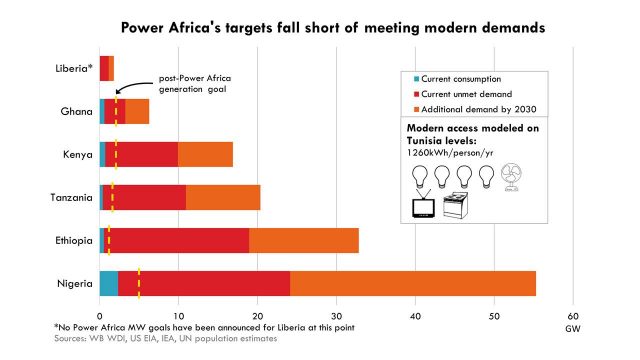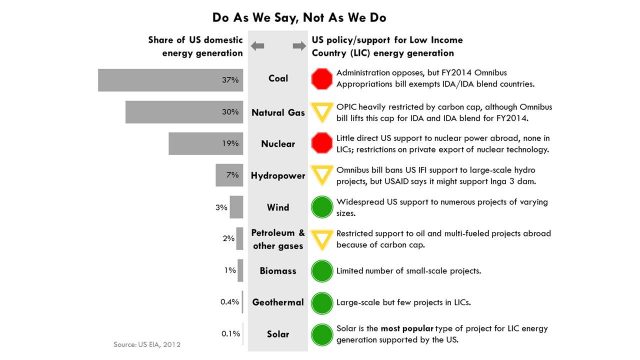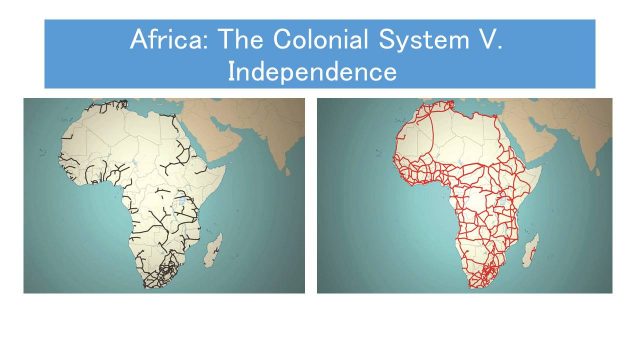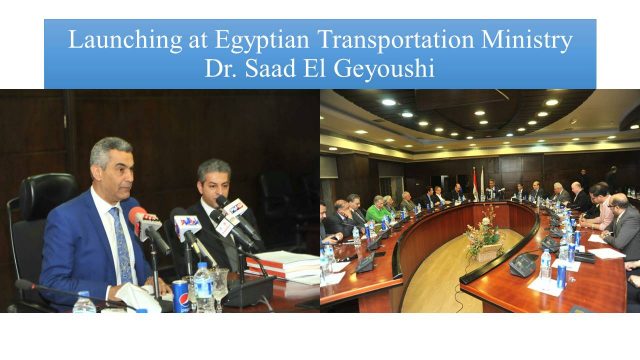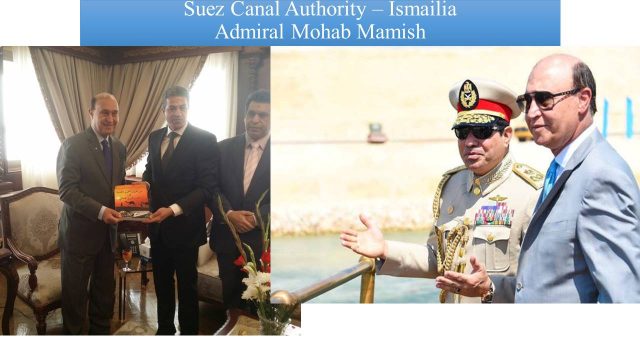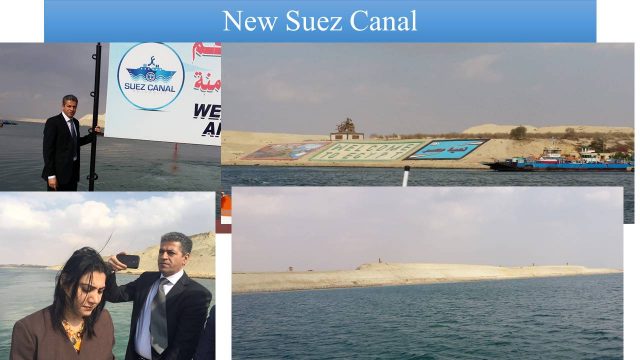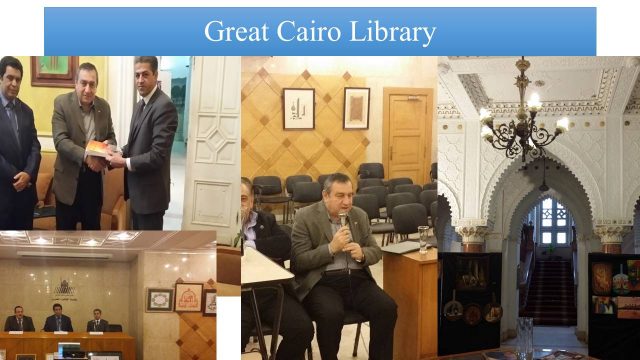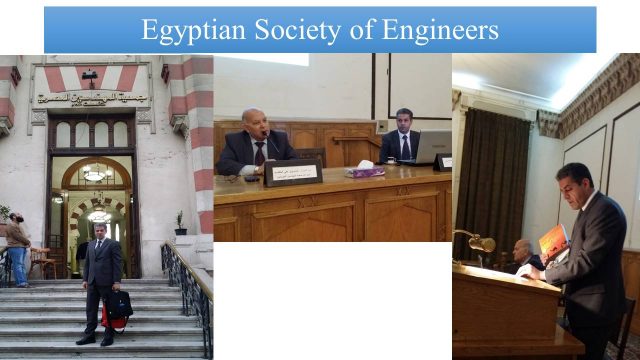Vi har et helt særligt program i dag; med mig i studiet har jeg Jason Ross, og via video fra Sverige har jeg Hussein Askary. Jason og Hussein er begge medforfattere af en ny rapport, der netop er udgivet, med titlen, »Forlæng den Nye Silkevej til Vestasien og Afrika: En vision for en økonomisk renæssance«.
(OBS! Se invitation til seminar i København 5. febr. med Hussein Askary)
[Bemærk: Der er mange billeder, der hver er separat nummererede af de forskellige talere; det er selvfølgelig bedst at se videoen, -red.]
Vært Matthew Ogden: Det er 19. januar, og dette er vores ugentlige fredags-webcast fra larouchepac.com.
Vi har et helt særligt program i dag; med mig i studiet har jeg Jason Ross, og via video fra Sverige har jeg Hussein Askary. Jason og Hussein er begge medforfattere af en ny rapport, der netop er udgivet, med titlen, »Forlæng den Nye Silkevej til Vestasien og Afrika: En vision for en økonomisk renæssance«.
Det bliver emnet for aftenens udsendelse; men før vi kommer til det, vil jeg gerne lægge ud med at sige, at LaRouche Political Action Committee har indledt en national kampagne for at sætte betingelserne for valgene 2018. Som I ser her, er titlen for vores kampagne »Kampagnen for at vinde fremtiden«, og det er titlen på en erklæring, der nu cirkuleres i hele landet. Erklæringens indhold fremlægger de politiske prioriteter, der vil bestemme udfaldet af valgene her i USA i år, med hensyn til dette lands overlevelse. Vi er i det indledende stadie for at indsamle underskrifter på denne erklæring, og vi opfordrer seerne, især her i USA, til at underskrive denne kampagne. URL ses her på skærmen, og I kan også få organisationer i valgkredsene, medlemmer af delstatskongresserne, siddende medlemmer af USA’s Kongres og i særdeleshed kandidater til offentligt (føderalt) embede, til at underskrive denne kampagne.
Indholdet af denne programerklæring er meget signifikant. Den kræver, at USA vedtager Lyndon LaRouches Fire Økonomiske Love, dvs.: Vedtag Glass-Steagall for at rejse en brandmur mellem kommerciel, produktiv bankaktivitet og spekulativ bankaktivitet på Wall Street; for det andet, at indføre et nationalbanksystem (statsligt banksystem) i Alexander Hamiltons tradition; for det tredje, brug billioner af dollar i føderal (statslig) kredit til at løfte det amerikanske folk og for at skabe produktiv beskæftigelse på det højeste og mest avancerede teknologiske niveau; og for det fjerde, sæt et forceret program i gang, der går i retning af udvikling af fusionskraft og udvidelsen af bemandet rumfart.
Det er meget, meget vigtigt, at vi har indledt denne kampagne nu, for vi går nu ind i de sidste 11-dages nedtælling fra nu og frem til præsident Trumps State of the Union-tale den 30. jan. Indholdet af dette politiske programforslag må være bestemmende for præsidentskabets politiske program her i USA. Som I ser, er vore to punkter på dagsordenen 1) Vedtag Lyndon LaRouches Fire Love, og 2) Gå med i den Nye Silkevej.
Det bliver emnet for vores diskussion i dag. For de seere, der evt. ikke ved det, så blev ideen om den Nye Silkevej først udarbejdet af Lyndon og Helga LaRouche i 1980’erne. Det var den daværende Eurasiske Landbro for at udvikle det eurasiske kontinents indlandsområder, som forbinder Øst og Vest. Det blev til den Nye Silkevej og blev kaldt således af præsident Xi Jinping i Kina, da han i 2013 vedtog dette. Det udviklede sig så til Bælte & Vej Initiativet, som var en forbindelse mellem den landbaserede Silkevej og udviklingen af en Maritim Silkevej.
Gennem LaRouche-bevægelsens lederskab udvides dette nu til ikke blot en eurasisk Ny Silkevej, men en Verdenslandbro, der omfatter alle Jordens kontinenter, inklusive Vesteuropa, Central- og Sydamerika, Nordamerika og for vores udsendelse her i dag i særdeleshed, Afrika.
Udviklingen af Afrika har ligesom været en slags lakmusprøve for menneskeheden i dag: Kina har taget denne udfordring op og har bestået prøven og sat standarden, som resten af verden må følge. Vi har set dette inspirere andre nationer, og for nylig har vi haft et meget signifikant gennembrud med den franske præsident Emmanuel Macrons besøg i Kina, hvor han mødtes med præsident Xi Jinping og erklærede, at Frankrig favner billedet af udvikling af verden gennem den Nye Silkevej, inklusive, at Frankrig ønsker at arbejde sammen med Kina om Afrikas udvikling. Dette er måske en bodsgang for Frankrigs kolonialistiske imperiefortid, men det, præsident Macron havde at sige, var meget signifikant.
Som I ser, så holdt han en meget signifikant tale i Xi’an, og i denne tale diskuterede han, hvad Kina har gjort for at udvikle Afrika og for at løfte 700 millioner af sin egen befolkning ud af fattigdom, og at Frankrig nu må imødekomme opfordringen til at deltage i denne udvikling, især udviklingen i Afrika, i partnerskab med Kina. Her følger et par citater af, hvad præsident Macron havde at sige:
»Det er lykkedes Kina i de seneste par årtier at løfte 700 millioner mennesker ud af fattigdom … Men jeg tænker også på Afrika. Kina har i de seneste par år investeret stort i infrastruktur og råmaterialer med en finansiel styrke, som europæiske lande ikke har. Samtidig har Frankrig historisk og kulturel viden om Afrika, som giver det mange aktiver for fremtiden.
Vi må ikke gentage fortidens fejltagelser, med at skabe politisk og finansiel afhængighed under påskud af udvikling … det turde være unødvendigt at sige, at denne udvikling kun vil ske i fællesskab … Frankrig har erfaringen med en ensidig imperialisme i Afrika, der undertiden har ført til det værste, og i dag, med disse nye Silkeveje, der åbner op … Jeg mener, at partnerskabet mellem Frankrig og Kina kan gøre det muligt at undgå en gentagelse af disse fejltagelser … Det er en moralsk udfordring, og jeg håber oprigtigt, at vi kan imødekomme den sammen … Det enorme arbejde, der gøres med infrastruktur og økonomisk udvikling, vil give et nyt ansigt til disse nye Silkeveje på det afrikanske kontinent.«
Som præsident Macron sagde, »det er en moralsk udfordring«; og nu får Afrika, der har været et af de mest underudviklede, fejlernærede, forarmede og tilbagestående steder på planeten, muligheden for en renæssance og for at blive et knudepunkt for udvikling for hele dette område af planeten.
Som jeg sagde, så er titlen på aftenens udsendelse »Forlæng den Nye Silkevej til Vestasien og Afrika«, og jeg vil lade Jason Ross introducere jer til Hussein Askary, og vi kan diskutere indholdet af denne specialrapport, der netop er udgivet.
Jason Ross: Jeg tror, vi skal gå direkte til Hussein nu. Hussein Askary har arbejdet i området i mange år. Han er den, der oversatte EIR’s Specialrapport, »Den Nye Silkevej bliver til Verdenslandbroen« til arabisk og lancerede denne oversættelse i Kairo på et møde med den egyptiske transportminister.
Hussein har arbejdet meget på dette. Sammen har vi skrevet denne 274-siders rapport, I ser her. I kan få en kopi af denne rapport på Amazon og direkte gennem vores site også, [LPAC.CO/ExtendedSilkRoad], I ser linket her for neden, for at få en kopi.
Og hermed, lad os høre fra Hussein.
(Her følger et engelsk udskrift af resten af udsendelsen).
HUSSEIN ASKARY: Thank you, Jason and Matt. I’m very happy
to be on this show. The writing of this report, actually, which
took us several months last year, together with you, Jason, and a
great team of collaborators in the Schiller Institute, it was a
bit of a paradox, because we were writing this report from the
standpoint of the future, and therefore the tone is optimism in
the report. But at the same time, when you look at the news
from Southwest Asia, which people wrongly call the “Middle East,”
and Africa, the news that these regions are, you know,
hell-holes and people are fleeing from there by tens of
thousands, there’s famines, there’s wars, and all kinds of
things. But, if you keep digging your feet into that so-called
“reality,” which is artificially created by geopolitics, you will
never come out and you will never be able to think clearly to
solve the problem.
And therefore, as Lyndon LaRouche always says, it’s the
future that determines the present. It’s our vision of the
future which gives us the inspiration and the means of thinking
to change our behavior today. And this is something which we
hope that with this report, too, and all the other campaigns we
are having, to change the minds of people, and of leadership,
whether it’s in the United States or Europe, or Southwest Asia,
or Africa — anywhere.
At the same time, we are not naïve, we are not in the ivory
tower, sitting and drawing nice baths, but this is a very
scientific study, based on LaRouche’s idea of physical economy,
but also they are philosophical and humanist principles
throughout this whole report and the project we are designing,
which goes both humanist Christian tradition and also the
Confucian humanist Chinese tradition. We have provided for the
readers of this report, a complete picture of what are the tools
needed, whether physically, or intellectually, scientifically and
morally, to be able to reach this future we are outlining in the
report.
And we are not simply just reporting on “great things” that
have already happened, that China is doing, but we are drawing a
map towards the future: A future which Lyndon LaRouche already,
more than 30 years ago, when the African Union published the
Lagos Plan of Action for the development of Africa, he criticized
the reaction to that policy by saying that you cannot adhere to
the existing financial and economic and moral policies of the
existing order, and at the same time achieve the development
goals of Africa. You have to have a complete shift. And that
shift is what Helga Zepp-LaRouche, the president of the Schiller
Institute now says is the New Paradigm, the New Paradigm which
has been launched by China and its partners in the BRICS, Russia
and other nations, and many more nations are joining.
Now, if we look at the first slide, the Silk Road, this is
what Matt said in terms of our development of the idea — the
LaRouches’ development of the idea of the World Land-Bridge, to
bring all the continents together. Now, the New Silk Road is
already reaching West Asia and Africa. Egypt has been building
the new Suez Canal to adapt to the Maritime Silk Road, and the
other nations, like Ethiopia, Kenya, and others are already in
collaboration and new railway systems have been built. So
already on the ground, that’s taking place.
But what is needed is a larger vision which we provide.
Now, also we have to reverse many of the old policies which have
been followed, which have kept Africa impoverished, such as, for
more than 200 years, Africa has been considered by the European
colonialists and their partners across the Atlantic, as a looting
ground — whether it is slavery, whether it is raw materials,
plantations, and so on. And unfortunately, after World War II,
the vision of Franklin Roosevelt was not implemented, because he
died before the end of the war, and a wholly new type of
creatures took over in the United States. And the United States
also, with the “special relationship” with the British Empire
became a partner in the looting of Africa. And companies we have,
like Anglo American, which is a corporation called Anglo
American, very active in mining in Africa — I mean, the name
tells you all about it.
But we just take a look at what has been happening in Africa
in at least the last 10-15 years, the attitude, — that’s what
is fascinating with the New Paradigm — the attitude of Europe
and the United States toward Africa has always been that “Africa
is a problem,” while the Chinese see Africa as an “opportunity.”
Therefore, the focus by Europe and the United States, while they
were looting the continent, were just pushing aid programs. Now,
the slide we have, number 2, here, is the “Foreign Direct
Investments in Africa,” where we see the United States is the
blue line on the top, and China is the red line, which is
increasing steadily. The United States, something funny happened
in 2008 — there was the financial/economic crisis — then you
have a dip in investments in Africa, but also what happens in the
United States is that the first African-American President is
elected. And you see, from 2009, U.S. investments in Africa
completely collapsed and came down to zero by 2015, while the
Chinese investments increased.
Now, there’s a flip side to this argument, is because most
of the U.S. investments in Africa are in the oil and mining
sector. And with the collapse of the oil and mining prices, there
was no more interest; and Mr. Obama also launched the largest
fracking operation on Earth in the United States, to make the
United States the biggest producers of fossil fuels in the world.
But China’s investments continued all the same.
In the next slide, number 3, we see the level of investments
by the Export Import Banks of the United States on the one hand,
which is the blue line which is completely dead, on the bottom;
the United States does not issue credit for exports any more to
Africa. But then we have the China Exim Bank increasing its
investments, and more interestingly, is that the World Bank,
which is the top, and you see where the failure of Western policy
in Africa has been: The World Bank has been investing more than
China in Africa, but it’s a completely misdirected investment.
It’s on tiny, tiny, small programs, there is no financing of
large-scale infrastructure as China does; there are no
transformative projects, and no new technology.
In the next slide, we can see we have a lot of hypocrisy,
saying that the Chinese want to come into Africa to loot African
natural resources, and this image, number 4, shows a very clear
picture that it is actually the United States and the Western
countries, but with the United States, the investments in Africa
have been mostly in the mining sector and the Chinese investments
have been very diversified, in construction, manufacturing,
mining, and others, such as agriculture, for example.
We can see also, the next slide, is Britain. Now, China is
the largest, and people think, is not the largest investor in
Africa, yet. It’s the United States and Britain which have been
the biggest investors in Africa. But as we showed the United
States is mostly interested in mining, energy, and metals; and
here we have Britain, you can see the last 10 years of
investments. [“U.K. Foreign Direct Investment Positions in
Africa, 2005-2014”] And the last two columns in the breakdown
into types of investments: The red one is mining, and the light
blue is in the financial sector, which is also looting Africa’s
financial resources.
So that’s really the picture. And in the final slide in this
group, number 5, we have where the investments of the Import
Export Banks have gone: The United States has 71% of all loans
from the Exim Bank, although it has been very, very little, but
70% of it is in the mining sector; while China, the greatest
chunk of the Exim Bank investments has been in the transportation
sector. And of course, there’s mining and energy,
communications, water, and other — very, very important sectors
for Africa’s development.
Now, what we have, in addition to this looting of Africa, we
have the hypocrisy which is very rampant in the West, like in
Europe and the United States, that “we have to help Africa.” Now,
when they talk about “helping Africa” is simply very small relief
projects to keep things as they are. And they usually talk about
“sustainable development.” Now, “sustainable development” does
not mean that you build modern technology, technologies that we
have in the United States or in Europe, whether it’s in transport
or power generation; it is absolutely forbidden to support roads,
railways, nuclear power, hydropower — there is nothing like
that. What they are proposing is simply, as President Obama, as
we show in one of the slides, when he went to Africa, his idea,
he had projects called “Power Africa,” for power generation in
Africa, and we looked at the numbers and you know, the goal of
Obama’s Power Africa is to keep Africa exactly as it is, with
very, very slight changes here and there. And also what was
being proposed was this idea of using solar energy, which
everybody knows is not efficient to have a modern, industrialized
economy.
So this has been a real problem in dealing with Africa. And
as we have seen, that China has completely different idea about
Africa —
ROSS: Hussein, why don’t we switch over to a clip we have
of President Obama explaining what he thinks about African energy
development?
PRESIDENT BARACK OBAMA: It’s going to be your generation
that suffers the most. Ultimately, if you think about all the
youth that everybody’s mentioned here in Africa, if everybody’s
raising living standards to the point where everybody’s got a
car, and everybody’s got air conditioning and everybody’s got a
big house, well, the planet will boil over. [end video]
ROSS: That was President Obama in South Africa.
ASKARY: And in fact, that’s really revealing, because
that’s his soul speaking, because they consider human beings as a
burden. Now, the United Nations statistics say that by 2050, the
bulk of the world’s population growth will take place in Africa.
And of the additional 2.5 billion new people, projected to be
born between 2015 and 2050, 1.3 billion will be added in Africa,
which means Africa’s population will reach about 3 billion
people. Now, for Obama and the Malthusians this is a huge
problem. But for China, this is a great opportunity!
And if we look, in 2015, which is very interesting, a
complete contrast with what Obama’s saying, when President Xi
Jinping went to South Africa, the same place where Obama was
speaking, in December 2015 at the Forum on China-Africa
Cooperation (FOCAC), this is slide number 10, President Xi
Jinping said something very interesting, which is really the
spirit of the New Paradigm: What he told the African leaders is,
I quote, “Industrialization is an inevitable path to a country’s
economic success. Within a short span of several decades, China
has accomplished what took developed countries hundreds of years
to accomplish and put in place a complete industrial system with
an enormous productive capacity.” And then he continues and says,
“It is entirely possible for Africa, as the world’s most
promising region in terms of development potential, to bring into
play its advantages and achieve great success. The achievement
of inclusive and sustainable development within Africa, hinges on
industrialization, which holds the key to creating jobs,
eradicating poverty, and improving people’s living standards.”
Now, wow! What a contrast! President Xi Jinping said that
by using modern technology as scientific development, we have
achieved miracles in China and this really applies to Africa,
too, as developing nations. And he means it. So the Chinese now
have turned the whole idea of :sustainable development” upside
down. What people think in Europe and the United States about
sustainable development means, pumps for water, the small solar
panels — no! China’s talking about [industrialization] and it’s
also the latest, the state-of-the-art technology available.
Because this is also interesting from a economic-scientific
standpoint, because what China experienced that instead of going
back to square one, going back to the industrialization process
where the United States and Europe started, with the steam engine
— no, you start not with that, you start with the best
technology available today, and that’s high-speed railway for
example. The same thing applies to Africa.
ROSS: You know, Hussein, you and I were both at a
conference in November in Germany, in Bad Soden, and one of the
speakers there was a Chinese professor He Wenping, who gave some
talks about Chinese approach towards Africa. And since you’re
bringing up what China’s policy is, why don’t run a short clip of
what she had to say, to hear it from a Chinese person directly?
DR. HE WINPING: But now, I think One Belt, One Road is
entering 2.0 version–that is, now facing all the countries in
the world. As President Xi Jinping mentioned to the Latin
American countries, “you are all welcome to join the Belt and
Road.” In the Chinese “40 Minutes,” Xi said, all the African
continent is now on the map of the One Belt, One Road, the whole
African continent, especially after the May Belt and Road Summit
in Beijing had taken place. …
China’s One Belt, One Road initiative is relevant to
countries, their own development strategy. For example, Ethiopia.
Ethiopia has now been named as the “next China” on the African
continent. It’s not my invention, these words–many scholars have
been published talking about which country in Africa is going to
be the China in Africa, which means, developing faster! Faster
and leading other countries forward. Most of them refer to
Ethiopia.
Ethiopia has now reached an GDP growth rate, last year, as
high as 8%…
So very quickly, let’s move to Africa. In Africa, we have
commitment, that is the FOCAC, the full name is the Forum on
China-Africa Cooperation. This forum was established in 2000, and
every three years there is a FOCAC meeting. The FOCAC meeting in
2015 took place in Johannesburg, South Africa. In that meeting,
President Xi Jinping joined the meeting, put forward ten
cooperation plans, and pledged the money–as high as $60
billion–to cover all ten areas: industrialization, agriculture,
infrastructure, finance, environmental protection, and more.
The Belt and Road is very good for Africa’s job creation. A
lot of money has been earmarked to use for the industrialization
of Africa. Let me just highlight in my last two minutes, the two
areas, like two engines–like in an airplane, if you want to take
off, you need two engines: One is industrialization, another is
infrastructure. Without good infrastructure, there’s no basis for
industrialization–short of electricity, short of power, short of
roads, and then it’s very hard to make industry take off.
We have done a lot. Africa now is rising. Before, Africa was
regarded as a hopeless continent, more than 15 years ago. But
now, with kite flying over, now it’s Africa’s rising time….
Just to show you another infrastructure map: the Mombasa to
Nairobi railway that was just finished at the end of May. We are
going to build the second phase, from Nairobi all the way to
Malaba in Uganda, and then that’s an East African Community
network. When this railway was finished–this is President Uhuru
Kenyatta, saying this laid the foundation for industrialization.
This shows people celebrating this railway connection, and this
shows a man holding a paper saying “Comfortable, convenient, very
soft, safe, and very beautiful.” And here, very beautiful at 100
years old, a grandmother. [applause] [end video]
ASKARY: Yes, that’s the spirit, that’s the spirit of things
that are happening in Africa, which is fantastic. But it’s also
a certain projection of the happiness of the Chinese people and
their leadership in what they have achieved in their own country.
So China’s saying, we have done this ourselves, you can do it,
and we are committed to offering you everything we have achieved,
so you can also achieve yours. It’s a win-win policy: It’s good
for you, it’s good for us.
It’s completely different from what we have seen in the
Western policy, which hopefully will change — what we mentioned
about President Macron, what he had said is really shocking for
me, too. And you see that the New Paradigm, it changes people’s
souls. And this is very, very important that we are becoming
more human than before, with these great achievements
So in any case, what we do in this report is, we took for
example, if you look at slide 12, this is a map which the African
Union put together in the Lagos Plan of Action in 1982. But
nothing has been done. This is for highways. Now, we don’t
prefer to have trucks travelling 10,000km from north to south; we
prefer more high-speed railway, standard gauge railways, and so
on. But this is the kind of vision which existed, but it was
never implemented.
Our vision of connecting the whole African continent, and
also with the so-called Middle East, that this could be done now.
We also believe that the Chinese intention is the same: To
integrate all of the African nations, the populations and the
natural resources of these nations, and utilize them for the
development of Africa itself. Now, in 2014, which is my next
slide [slide 13], the Prime Minister of China, Li Keqiang, went
on a tour in Africa. This picture is his meeting with the
leaders of the East African Community, which Professor He Wenping
just mentioned in her speech in the video you showed. He told
the African leaders that China’s intention is to help connect all
the African capitals with high-speed railway. One interesting
thing which the Africans themselves say, is that when the Chinese
want to do something here economically, when they want to help,
they are not like the Europeans. The President of Uganda said,
they don’t come here with lessons in democracy; they come here to
build things, they are not lecturing us. This is very
interesting because China is not imposing anything on any nation.
It’s inviting others and offering its capabilities. This was in
May 2014, and in just three years, we have the first standard
gauge railway which is in the next slide [slide 14]; Uhuru
Kenyatta, very proud, inaugurating the railway from Mombasa to
Kenya. There was a British line which was called the Lunatic
train, which was very slow, but it was designed to loot African
wealth. And also the Djibouti to Addis Ababa railway was built,
also in three years in record time, and so on and so forth. So,
China is winning African hearts and minds by doing these
investments, but doing them in record time and with no
conditionalities involved.
In addition of course, some of the mega-projects which we
are demanding be built and encouraging being built in Africa with
China’s help, for example we have in slide 15 the Transaqua
Project, which is an Italian-designed project to both refill Lake
Chad, which is drying up and threatening 30 million people’s
lives with drought. To bring just 5% of the water of the
tributaries of the Congo River to Lake Chad through an artificial
canal. But at the same time, connect East and West Africa with
railway and roads to open these countries, which are Rwanda,
Burundi, and Eastern Congo, the Central African Republic, Chad,
and so on. These nations need outlets to world markets and also
to import useful machines and so on. So, we have been
propagating, as the Schiller Institute, for many years and trying
to get the European Union and the United States to support this
project; but they rejected it. Now China is proposing to start
looking at this project, and a Memorandum of Understanding was
signed with the Lake Chad Commission to have a feasibility study
of this project; which is a huge project, but it will transform
large parts of Africa, not because of the water itself, but
because of the old infrastructure involved in the central part of
Africa. The next slide [slide 15] outlines the impact area of
this whole project. It will create massive agro-industrial
centers in that part of Africa which is suffering the most. The
biggest migration from Africa is from these regions into Europe.
But instead of having all those young people drowning in the
Mediterranean, trying to flee to Europe looking for a decent
life, they can stay in their countries now and build their
countries by giving them the tools to do that.
Of course, there are also other projects, but what’s
interesting about the Belt and Road is that it’s also inspiring,
not just helping countries, but inspiring countries to undertake
plans which have been dormant for many years. But now the time
has come; for example, the new Suez Canal project. There is also
connecting to Europe from Morocco, which is the next slide [slide
16]; building a tunnel under the Strait of Gibraltar, connecting
Morocco and Spain; and building a high-speed railway, the first
high-speed railway in Africa is being built now in Morocco.
There are new ports being built, and also a scientific,
industrial city being built in cooperation with China. We have
another connection between Africa and Europe; we have still not
given up on Europe. We want Europe to its and technological
potential to contribute to this project and help itself by
contributing to Africa’s development. We have the Sicily to
Tunis tunnel and bridge connection to connect North Africa also
to Europe; this is a mega-project, and so on and so forth. We
have also the Grand Inga Dam which China is now interested in
building on the Congo River, which will produce a huge amount of
hydropower — 40,000MW of power — which is twice as big as the
biggest dam in the world which the Chinese built in China; the
Three Gorges Dam. The Inga Dam, or series of dams, will be twice
as big as the Chinese Three Gorges Dam, and a Chinese company has
made an offer to the government of the Democratic Republic of
Congo; and there’s also a counterbid by a Spanish company.
People should read the report; they should look at all the
content and try to understand it with a completely new eye. The
eye of the New Paradigm, which I think is very important. In
conclusion, what I wanted to say initially, is that as we have in
the last slide [slide 19] is this region which people call the
Middle East; we call is Southwest Asia. It has been a horrific
scene for the worst results of geopolitics and power politics.
Regime change in Libya; regime change in Iraq; attempted regime
change in Syria supporting terrorist groups. We have a horrible
war in Yemen which should end immediately. It’s the worst
humanitarian catastrophe in the world right now, taking place in
Yemen. You look at this region and say “How could this region
get out of this Hell?” This is what Helga Zepp-LaRouche said:
This year we should kill geopolitics. We should end geopolitics.
The idea that nations have to undermine other nations; that
nations are in competition with each other; that you have to
weaken your adversaries; you have to undermine them, you have to
kill them, you have to ruin their economy, destroy their
infrastructure, so you can become a winner. That ideology is not
really human. This has to end now and be replaced by the
“win-win” idea, which is the more human kind of idea. The
potential for enormous development exists in this region. It’s
the crossroads of the continents. Both the Belt and the Road
pass through there. Forty percent of world trade passes through
there. You have natural resources, you have human resources, you
have rivers; you have every element necessary to have a massive
development process in this region, which will be the basis for
establishing peace among the nations of this region and also the
big powers. If the United States joins Russia and China in
developing this region, this would be the biggest test for
mankind. Of course, Africa is very important, but we have things
happening in Africa. But, we still have a horrible situation in
Southwest Asia, which can lead into new and maybe bigger wars
than before. Therefore, I think what Helga is saying that if we
use the Belt and Road idea, the idea of “win-win”, to crush
geopolitics, this would be victory not only for the countries of
this region; this will be a victory for all humankind.
ROSS: Absolutely! It’s a victory for a concept of mankind.
One example that comes to mind is Yemen. Yemen is under constant
Saudi bombardment; they’ve been victims of a war by the Saudis
for some time now. Yemen has a very powerful movement within it
for integration with the BRICS; a real sense of “Hey! Even
though our conditions right now are what they are, this is our
future; and we’ve got to have that future in mind. That’s what
we’re going to make happen.”
You think about the economic potential of Africa, and as you
said, it’s so clear, it’s so obvious the economic potential in
West Asia and Africa. Geopolitics is what has prevented this
development. It’s not that Africa didn’t get the help that it
needed; China is showing that it’s an obvious thing to do. It
was a deliberate decision to prevent development and to hold
Africa back for the purposes — as you described — of looting.
A couple of examples that you brought up, just to bring out the
contrast a little bit more: You brought up the Grand Inga Dam
which would be located in the Democratic Republic of Congo; one
of the poorest, most energy-poor per capita, very low energy
availability. It’s got the perfect site for a hydroelectric dam
complex, making enough electricity for tens of millions of
people. The World Bank pulls out funding on it, because it’s a
big project which of course, they’re not going to touch because
it would have a major development impact.
What I’d like to actually show is another voice from Africa.
Professor He Wenping had mentioned that Ethiopia is sort of the
China of Africa, and other African diplomats will say this as
well; that Addis Ababa is sort of the unofficial capital of
Africa. I don’t know if everyone in Africa agrees with that.
But I’d like to hear from Dr. Alexander Demissie, who also spoke
at the Schiller Institute conference in November, and hear from
him from a direct African perspective, what the impact of Chinese
investment has been and what the future can be in Africa.
DR. ALEXANDER DEMISSIE: So today, what I’m trying to
discuss with you, or to present to you, is what is actually this
Belt and Road Initiative and how is that connected to Africa?
What kind of long-term impacts when we talk about the Belt and
Road Initiative and Africa?
So, this is a map [Fig. 1] I always present when I do
presentations, and I ask people, “What do you see here?” It’s a
very simple question. But what do you see here? Yes, you should
see something. So, it’s a rhetorical question; I’m not expecting
you to answer me. But it takes usually several minutes until
people realize what they see here. You see the absence of the
American continent; that’s what you see here. The absence of the
American continent. By saying this, you see that the Belt and
Road Initiative, the Chinese version of the Belt and Road
Initiative, is absolutely Eurasian-oriented; meaning that
starting in China, it is primarily Eurasian-oriented. The idea
of the Belt and Road Initiative — probably even your idea back
in the ’70s — is the Land-Bridge that we have been discussing
yesterday and today. Within this picture or map, you will see
also Africa. Africa is prominent, Africa is not entirely in the
center, but on the left side; and it should be part of the Belt
and Road idea. It’s primarily an infrastructural undertaking, so
the Belt and Road Initiative we don’t have yet political
institutionalization. We have infrastructural ideas, we have
corridors; but we don’t have yet political institutions. If we
talk about the Asia Infrastructure Investment Bank or the Silk
Road Bank, these are just connected to infrastructure; they are
not political ideas. And interestingly, this idea fits perfectly
into the current African needs. What are the current African
needs? The current Africa need is infrastructure development.
Africa wants infrastructure and the aspiration — I’m going back
here to the Agenda 2063, that has also coincidentally been coming
up 2013 together with the Belt and Road Initiative. Africa wants
a good infrastructure connection, a good internal
interconnectivity. So, the idea coming from China is perfectly
fitting into the idea actually happening or discussed within the
Africa continent.
We see now an actor coming in. China is an actor coming in
and literally taking or doing part of those needed works. This
is a huge — at least from the African perspective — this is a
huge plus for many African countries. The idea of the Belt and
Road Initiative, which is actually coming only in 2013; we see
that it is helping what has been taking place on the continent
between China and African countries since the year 2000. We see
this that China has clearly declared that they would like to see
Chinese-African cooperation moving into development of highways,
regional aviation networks, or industrialization. Also we see
that China has been given a lot of clarity to the African Union’s
infrastructure development for Africa. This program has
approximately 51 different programs, and this is translated into
400 different physical projects. I speak about ports, and
streets, and telecommunication lines, whatever you require for a
nation to function, or for a continent to function.
What we see in Africa now is that since at least two years,
there is a growing corridorization in the China-Africa
relationship. As corridorization, I mean that not single
countries are any more important, but entire regions are becoming
more important for China. This is a huge departure from a
single, bilateral country-based approach towards corridor
development. If you look at Africa corridors, the map on the
right [Fig. 2], we see right now as we speak today, there are
around 33 different corridors that have either been developed, or
are under development, or are thought out and need to be
developed. Corridors do nothing else than combine two different
areas, and by doing so also creating a development initiative, a
development paradigm.
Let’s go to East Africa. So now, this is Africa; I’m aware
that the plans for these things have been in the drawer for a
long time. We know also that a lot of American research
institutes played a very good role in creating those plans in the
’50s and ’60s, especially in Ethiopia. The Grand Renaissance Dam
that is being built in Ethiopia, goes back to American scientists
that have been creating those ideas in the ’60s. It’s being
built already now. So, a lot of ideas in East Africa have been
already on the table for decades, but no one was able or willing
to pay for it. But now a lot of money is coming out of China, so
these infrastructure — and how this can change the life of the
people is easily described. The transportation of cargo from the
Djibouti port to Addis Ababa used to take three days. Now, with
the train, it’s already 10 hours. So now we can imagine what
kind of economic activity will happen to this one corridor
development, or one infrastructure within this community. [end
video]
ROSS: I just wanted to read another short excerpt from
Alexander Demissie. Towards the end of his presentation, he
said, “The problem as I see it, is that the traditional partners
are still in the old paradigm of thinking. They still think with
traditional assumptions. Africa is seen as an aid-dependent
continent; not a continent full of opportunities. It is still
seen with the wrong mindset. This is one of the biggest
problems, and it has to change.”
So, I think our report does a very thorough job of
addressing the whole gamut of issues here. What the historical
errors have been, or not errors, but cruelties or injustices that
have occurred towards Africa, towards Southwest Asia with the use
of geopolitics, with the use of looting rather than development.
As well as what some of the ideas are today that hold back the
potential for development. The ways that environmentalism is
used; the ways that there shouldn’t be any net growth of the
human species are used. This is the basis, for example, for the
World Bank refusing any loans to coal or to large hydro plants.
But you’re not going to develop a continent with solar panels, as
much as Obama might have wanted to have done that.
The other issues are in regards to economics. That there is
this prevailing and totally wrong view about economics that looks
for financial returns as being the metric; as opposed to going
beyond GDP and saying how are we changing life expectancies? How
are we changing productive potential? What’s the long-term value
of helping a nation to develop in a partnership? This is the
sort of thing. So, the report goes through all of this; it goes
through what the specific projects are that are needed. It goes
through something that’s very important for policymakers — how
to finance it. How the hopes of trying to get investment, of
trying to get loans from private banks for these big projects;
it’s simply not going to fly. The use of national banking, as
China has done both domestically as well as with its ExIm Bank
with these two large rail projects in Africa in particular in
Kenya and the Addis Ababa to Djibouti railroad.
So, I think we’ve heard from China, we’ve heard from
Southwest Asia, we’ve heard from Africa. Let me ask you,
Hussein, if you have any words that you would like to direct
towards our American viewers. What would you tell Americans?
What should we be doing?
ASKARY: Exactly! I had also in mind to say that, because
we need to hear from Americans. I don’t think it’s a good idea
that the United States is not on the map of the Belt and Road;
but I think a different United States should be involved. I’m
very sure that if President Franklin Roosevelt, President
Kennedy, Dr. Martin Luther King must be very happy now for what
is now already starting to happen in Africa. They might feel
sorry for the lost time, but I’m sure they are happy. Americans
should look back at that best of American tradition and work with
ideas of Lyndon LaRouche and the LaRouche PAC and LaRouche’s
associates, because the United States will not become great again
with the team that President Trump has. America will be great
again with the ideas that the LaRouche PAC, the ideas of Franklin
Roosevelt, the Hamiltonian idea of a national credit system,
rather than depending on Wall Street. These things will make
America great again, but it also will help the United States to
have a completely different policy in the world; which will make
the people around the world see the United States with completely
different eyes. Right now, the United States is not so liked
around the world; not because of Trump, but because of previous
administrations’ war policies, their hypocrisy. As you showed in
Obama’s case, their policies would lead to genocide. So, the
United States is not really a popular country around the world,
but this can shift. In order for that shift to happen, there
should be a shift inside the United States in the mind and the
soul of the American people. I’m sure the kind of work you are
doing in LaRouche PAC would help greatly.
OGDEN: And that’s exactly what we are doing with this
campaign to win the future statement. As I said in the beginning
of the show, we’re initiating a national mobilization to bring
together all of the constituent layers — regardless of party,
political orientation — around a vision of economic development
for the United States and for the world. If you just imagine the
kind of way that the world could be transformed in the next 15 or
20 years with what China has begun doing in Africa; something
that people thought was impossible. They just disregarded Africa
and said well, this is just where you’re going to have
impoverishment and backwardness. Now, this could seriously
become a hub of development for the planet. But take that and
extend it across the Bering Strait into the Americas; have a rail
link between Eurasia and North America. Then imagine an entire
development corridor down through the central part of North
America, through the heartland, the farm country in the Midwest;
down through Mexico, across the Darien Gap into Central and South
America. Then also, extend the Maritime Silk Road to the
Caribbean. That vision of what could happen in the Western
Hemisphere is the extension of the sort of optimism that you now
see China bringing to Africa.
So, as I said, I think it’s the great moral test. Emmanuel
Macron was absolutely right; he said it’s a moral challenge what
the nations of the world do to collaborate to bring development
to the African continent. I think we can be very happy that it’s
because of the leadership over decades of the LaRouche movement,
of you Hussein. What you’ve been doing; what you did to
collaborate with Jason to put together this extraordinary Special
Report. I know that this is being listened to in the highest
levels of power across the African continent and in Southwest
Asia; we have evidence of that. The invitation that you
received, Hussein, from the Egyptian Transportation Ministry, and
other examples. So, we have to proceed with that kind of
confidence that we are, indeed, shaping the policy for the
future.
So, let me put on the screen one more time; this is the
vision of an economic renaissance — this is the Special Report
that Jason and Hussein collaborated in authoring. That is
available; you can find the link to that on the screen here —
LPAC.CO/ExtendedSilkRoad. It’s a very thorough, book-length
Special Report. This is something that is not just important for
the African leaders and for China. This is something that is
very important for the United States. This is something that we
should be considering when we talk about what is US foreign
policy, and those disgraceful graphics about the plummeting of US
investment into Africa over the course of the last eight years
during the Obama administration. That needs to be reversed; and
it needs to be reversed by bringing the United States and China
into a “win-win” collaboration for the development of these
areas.
We are going to proceed with this campaign to win the
future. And we’re asking you to endorse this, to join our
mobilization, and to make sure that this becomes the policy
parameter for the 2018 election. None of the melodrama, not the
soap operas, not all of the secondary and tertiary issues. These
are the questions which will determine the future of the United
States and the survival of our country and what our role is in
respect to this New Paradigm that we’ve just been discussing on
the show today.
So, again, we have 11 days between now and President Trump’s
State of the Union address. We are putting these two items on
the agenda. The United States must adopt LaRouche’s Four
Economic Laws, and the United States must join the New Silk Road.
So, Hussein, is there anything that you want to say in
conclusion before we end this show today? Any special messages
for our viewers, both in the United States and internationally?
ASKARY: I think it’s a great opportunity for people now to
get this report, take to themselves the scientific, even
philosophical and other ideas that are in the report which are
necessary. As you said, it’s for everyone; it’s not only for
Africans. I think the main target of the report should be
Europeans and Americans, because we need these kinds of ideas
more than at any time before. We have problems here in Europe
with the infrastructure, with unemployment. You have massive
problems in the United States. You need to have these ideas for
your own sake, too; but there is enormous potential that exists
in Europe and the United States that could be revived. But that
has to be done in the right way; and the right way was outlined
by Mr. LaRouche, but we put it in very clear terms in this
report. I hope people will get the report and learn something
and push the policymakers in the United States to also do the
same.
OGDEN: Wonderful. Thank you very much, Hussein, for
joining us. And thank you to Jason for joining me here. I think
we have a lot more to come. So, a very exciting report here
today. Help us circulate this video; send it out to everybody
that you know; share it on social media. Let’s get these ideas
to permeate the United States. Thank you very much and please
stay tuned to larouchepac.com.
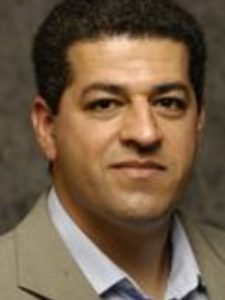 International gæstetaler: Hussein Askary, medforfatter af rapporten; koordinator for Vestasien for Schiller Instituttet og EIR’s redaktør for arabiske anliggender.
International gæstetaler: Hussein Askary, medforfatter af rapporten; koordinator for Vestasien for Schiller Instituttet og EIR’s redaktør for arabiske anliggender.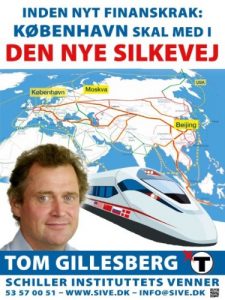 Taler: Tom Gillesberg, formand for Schiller Instituttet i Danmark; EIR’s bureauchef i Danmark og tidligere kandidat til Københavns borgmester med sloganet, »København skal med i den Nye Silkevej«.
Taler: Tom Gillesberg, formand for Schiller Instituttet i Danmark; EIR’s bureauchef i Danmark og tidligere kandidat til Københavns borgmester med sloganet, »København skal med i den Nye Silkevej«.